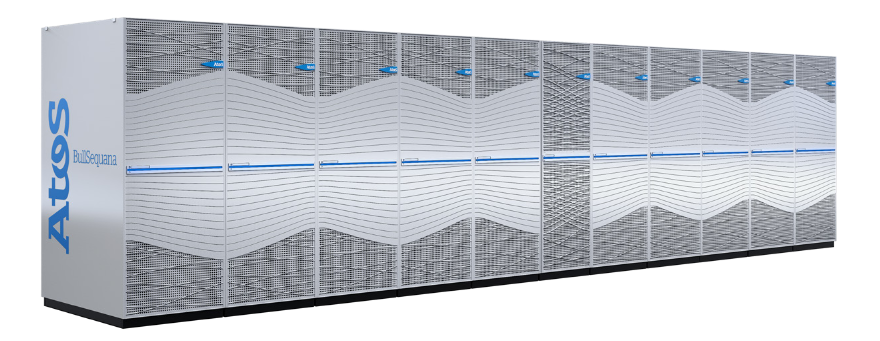AMD Epyc 7742 CPUs Tapped for European Weather-Predicting Supercomputer
AMD won a contract with Atos for building the BullSequana XH2000 supercomputer for the European Centre for Medium-Range Weather Forecasts.
After recently pulling off a big win in the Archer 2 Supercomputer installed in Edinburgh, AMD this week announced another big supercomputer contract,. This time it's to build the weather-predicting BullSequana XH2000 with Atos. The supercomputer will be installed for the European Centre for Medium-Range Weather Forecasts (ECMWF) research center and 24/7 operational weather service in Bologna, Italy.
Atos has multiple XH2000 supercomputers already, but the one in question will be built on AMD Epyc 7742 processors, which is a 64-core 128-thread chip with a 225W TDP.
Exactly how many chips will be installed wasn't detailed, but we do know that each individual XH2000 42U cabinet will be able to house up to 32 compute blades. These are liquid-cooled 1U blades each capable of housing three compute nodes that can support a wide variety of platforms, including AMD's Epyc chips as well as Intel's Xeon and Nvidia's Volta V100. On the modular platform, this means that the total systems can be configured exactly to the customer's liking.
“This new solution will optimize ECMWF's current workflow to enable it to deliver vastly improved numerical weather predictions," Sophie Proust, Atos Group CTO, said in a statement. "Most importantly though, this is a long-term collaboration, one in which we will work closely with ECMWF to explore new technologies in order to be prepared for next-generation applications.”
Assembly of the XH2000 installation in Bologna will commence this year with the aim of starting its service life in 2021. It will be accessible to researchers from more than 30 countries, and the goal is running higher-resolution weather predictions of 10km.
Get Tom's Hardware's best news and in-depth reviews, straight to your inbox.
Niels Broekhuijsen is a Contributing Writer for Tom's Hardware US. He reviews cases, water cooling and pc builds.
-
msroadkill612 Bureaucracy gone mad. Do they have separate centers for predicting really bad weather & really nice weather?Reply -
Olle P Reply
It's nothing about "good" or "bad" weather, it's about accurate or flawed predictions.msroadkill612 said:... Do they have separate centers for predicting really bad weather & really nice weather?
My reflection is only that it's no surprise that a new supercomputer get equipped with Epyc CPUs, so these "news" would be more relevant for investors. -
bit_user Reply
You're referring to the fact that it's specifically for medium-range predictions? Well, medium-range is probably both really hard and where you have the most benefit to life safety and economic impact. If a hurricane is going to hit, you need to provide several days' warning, so that people can prepare or evacuate. Just 24 or even 48 hours isn't enough notice. It therefore makes sense that they'd want to invest significant resources specifically focused on that problem.msroadkill612 said:Bureaucracy gone mad. Do they have separate centers for predicting really bad weather & really nice weather?
Long-range is harder to do with good accuracy, and perhaps gets more into the realm of climate modelling. I can understand why one might not put the same level of investment into it. Farmers, ski resort operators, and water system managers might really care, but it wouldn't have the same importance to society. It will never have the level of accuracy that's required for planning around heatwaves and major storms.


